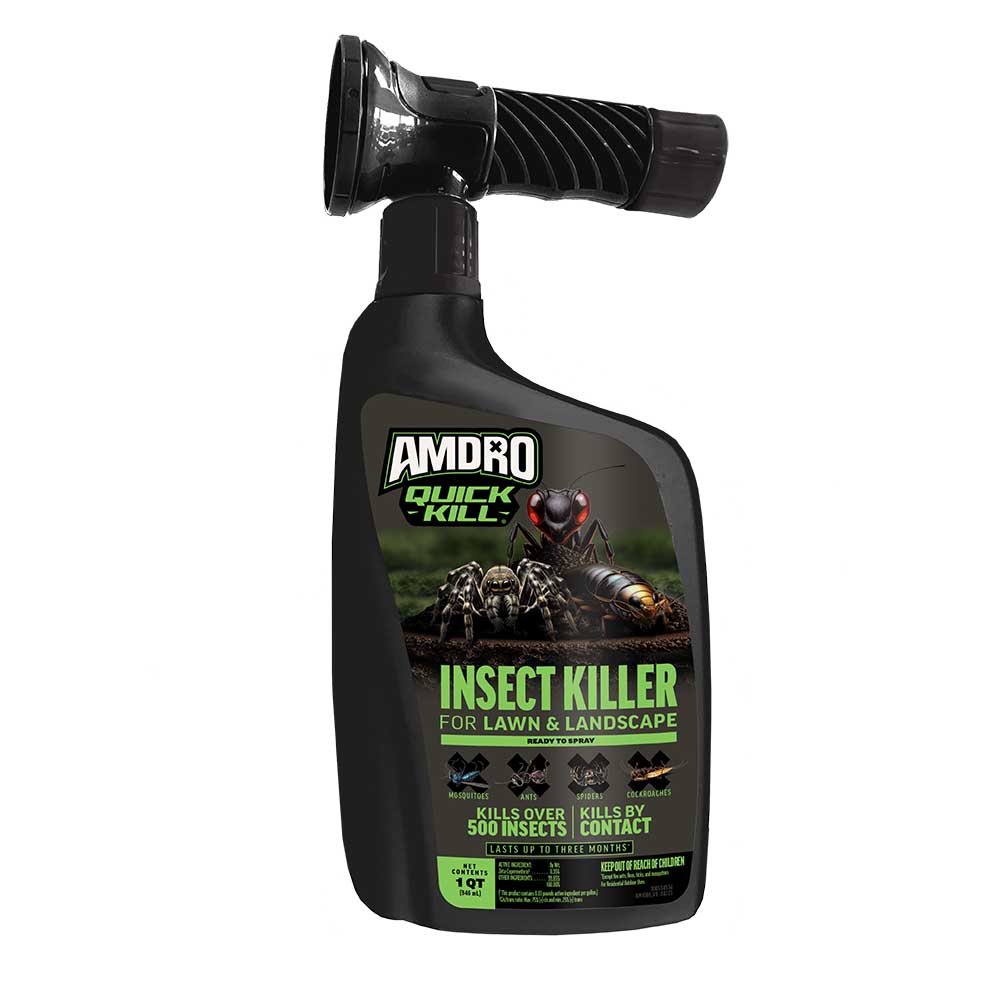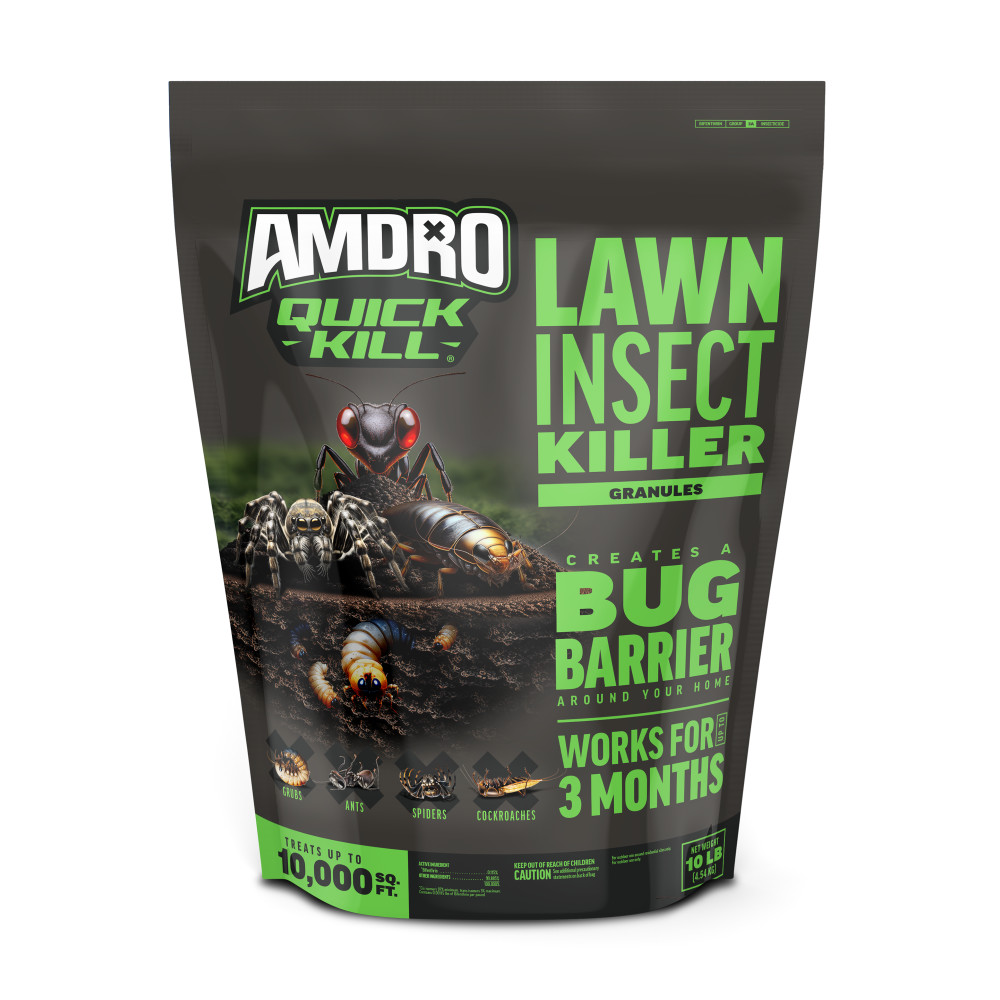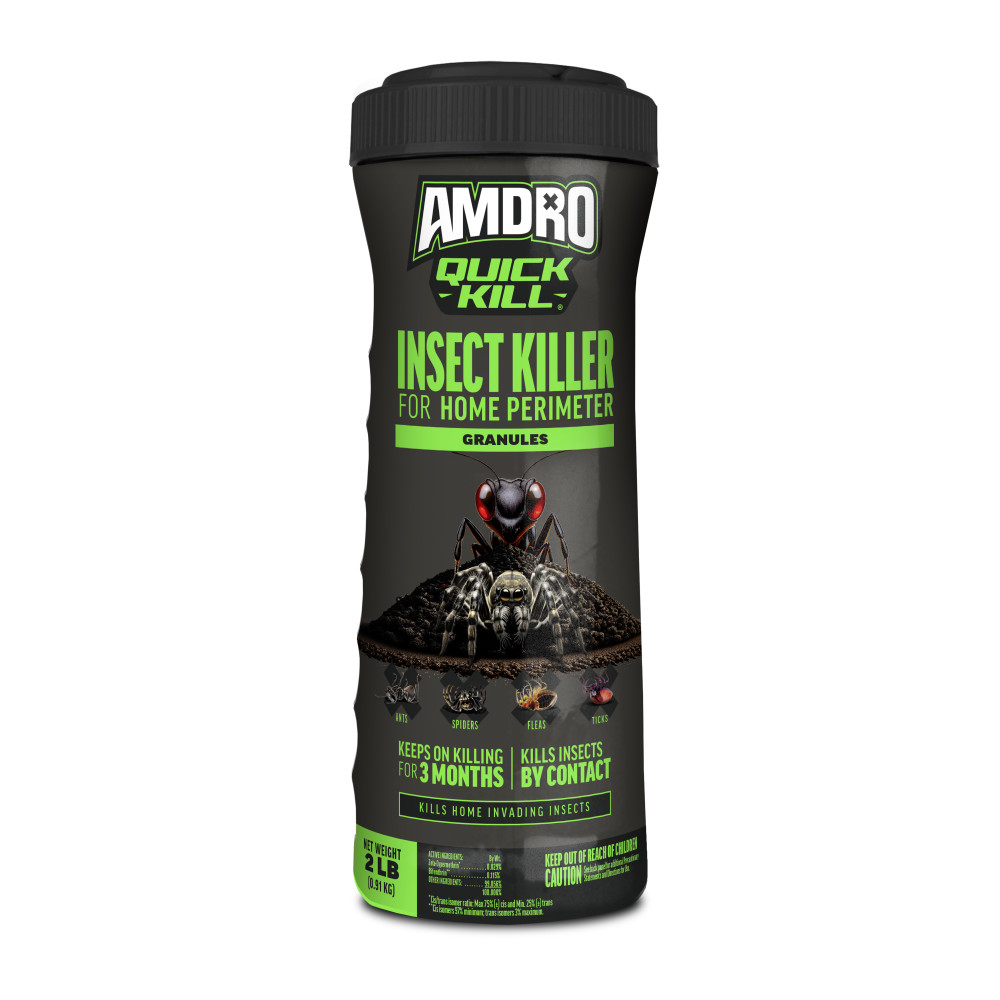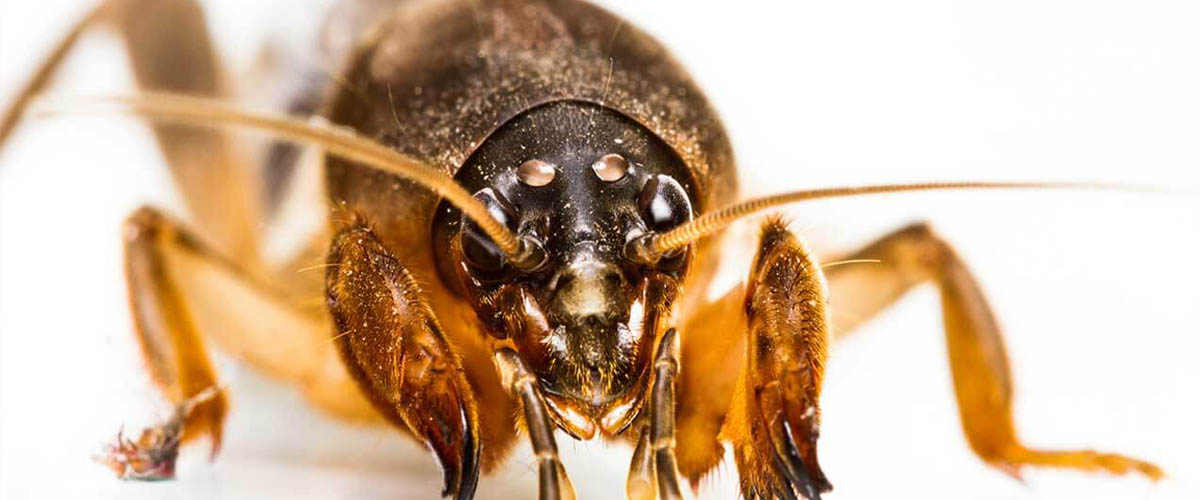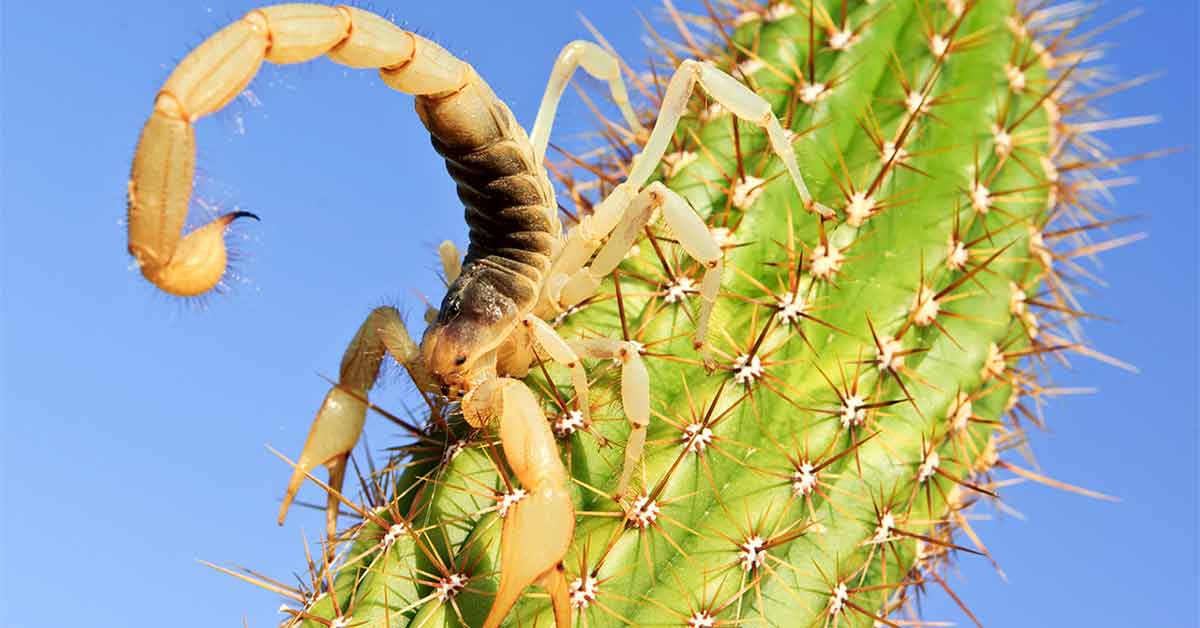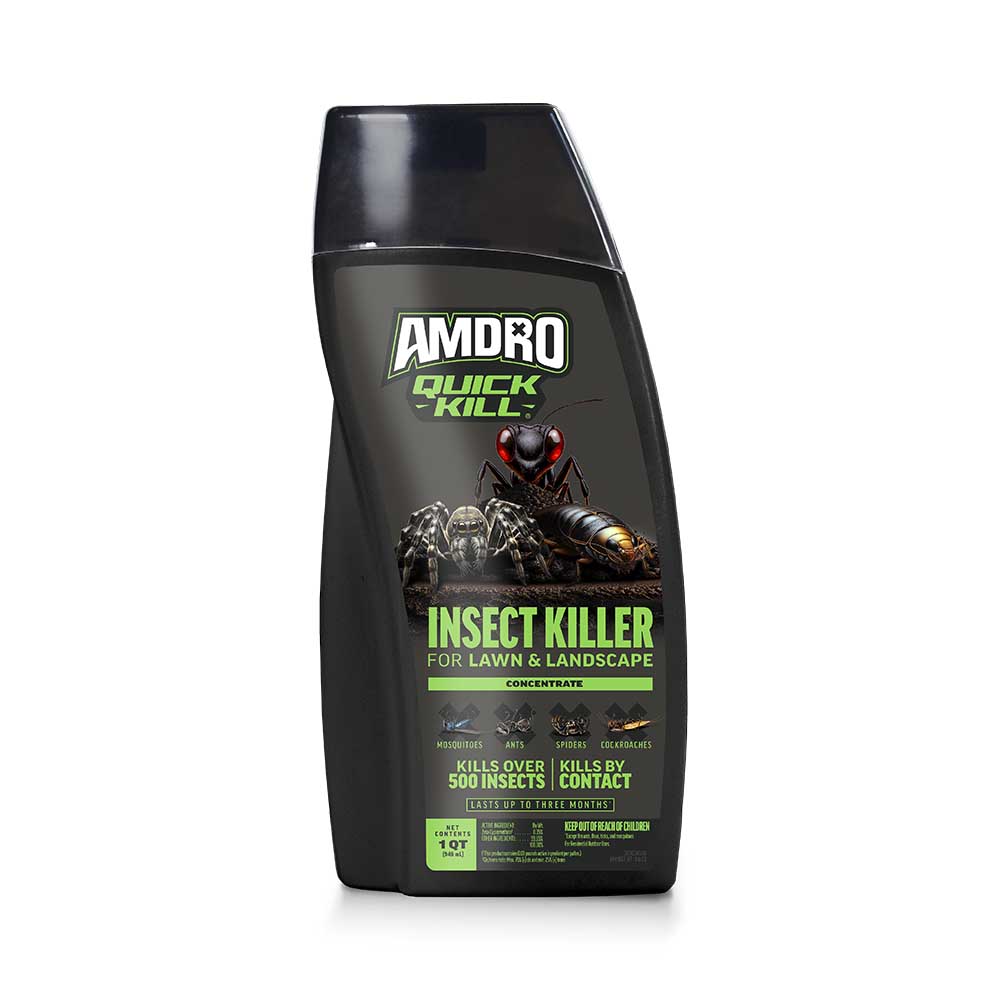

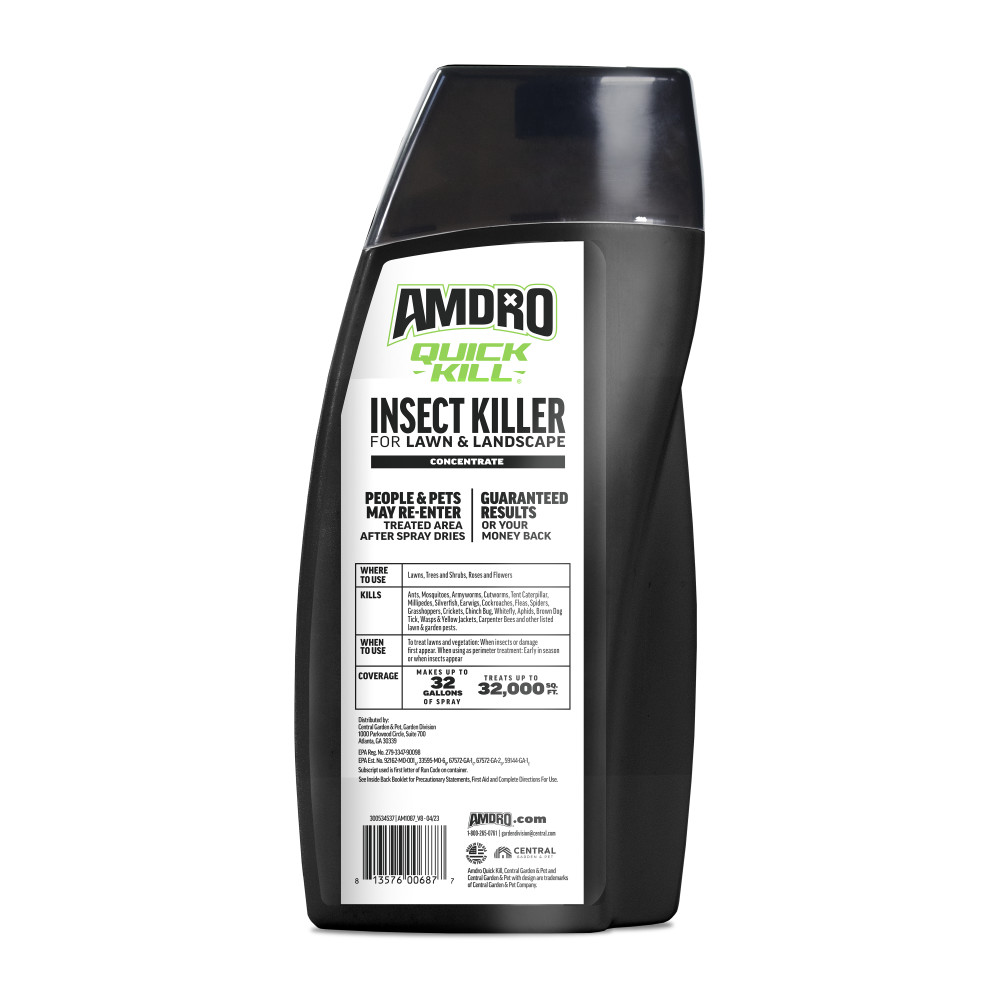
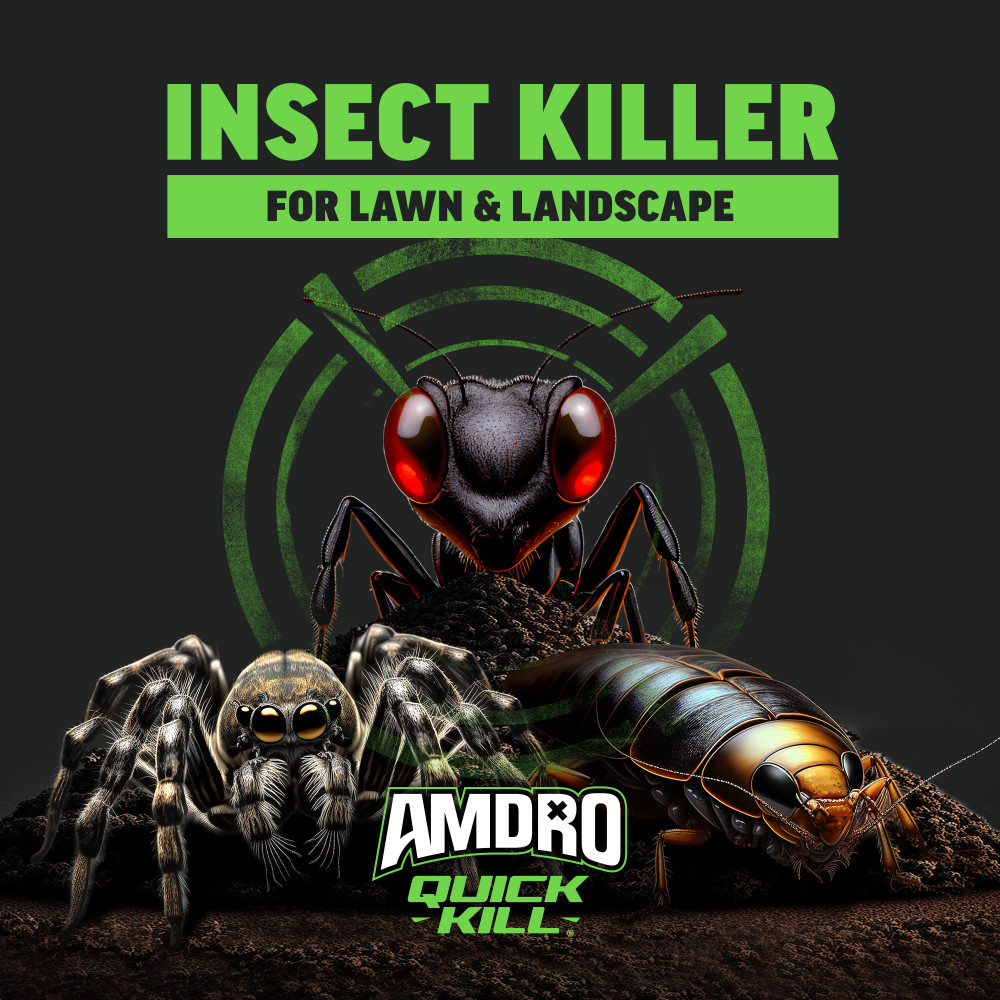

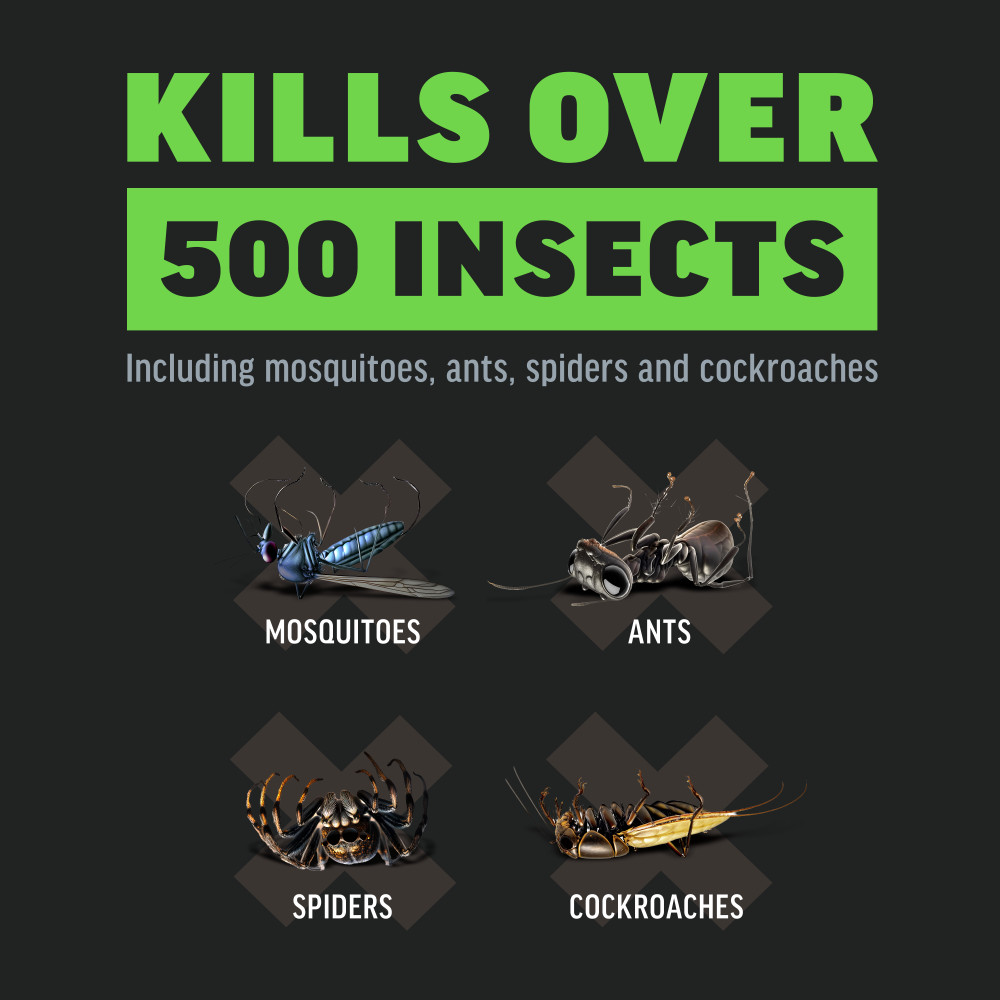


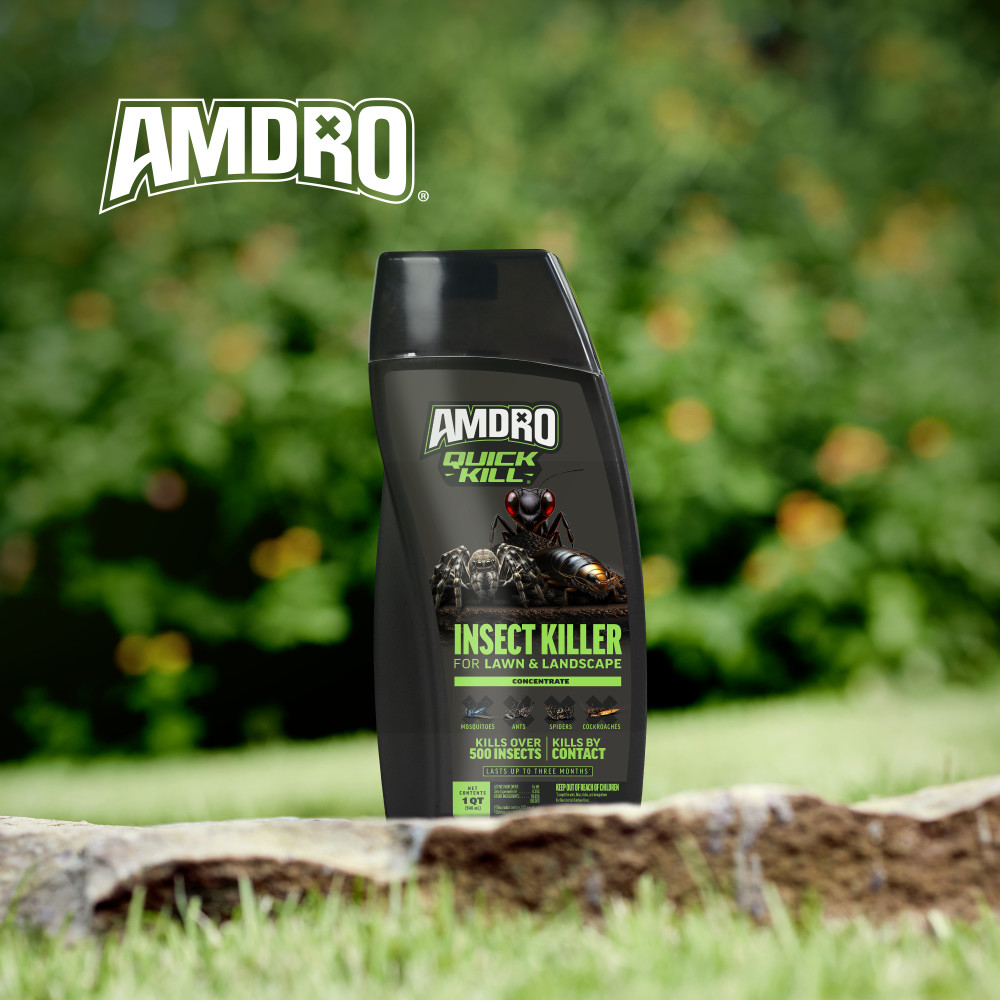
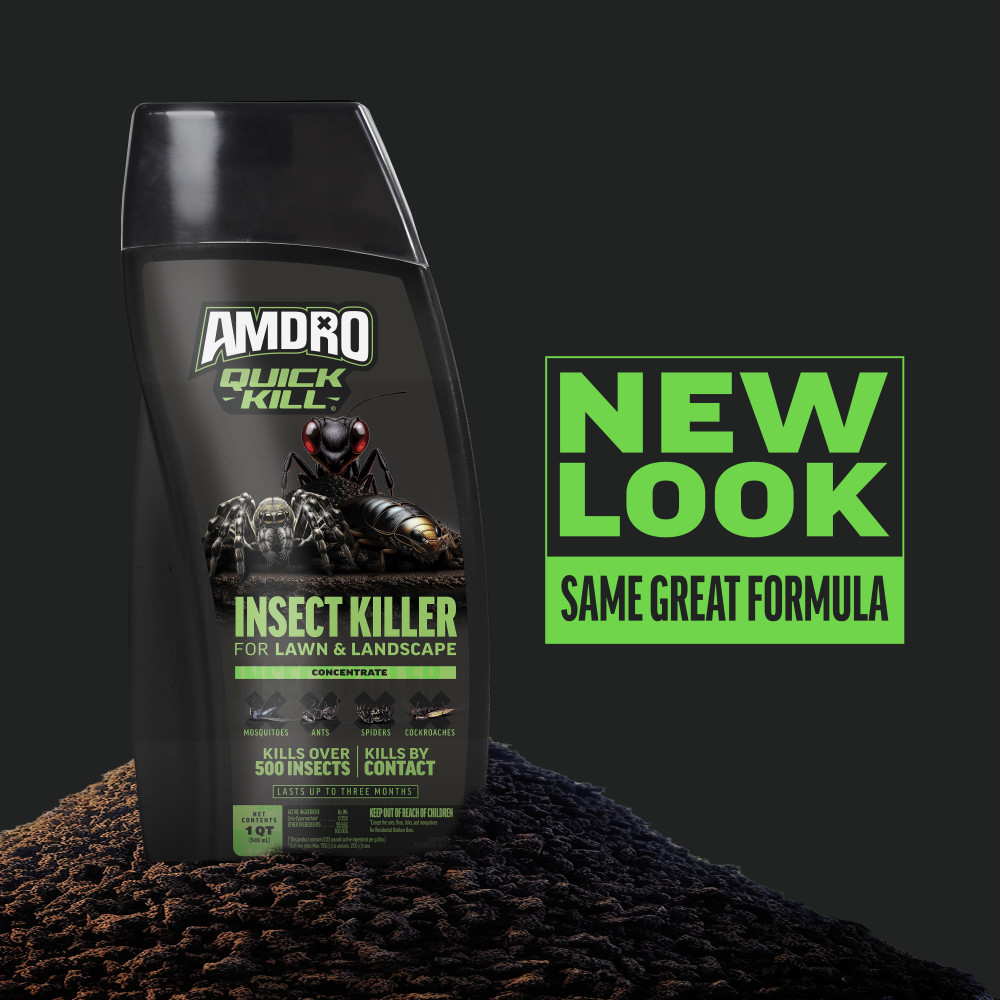

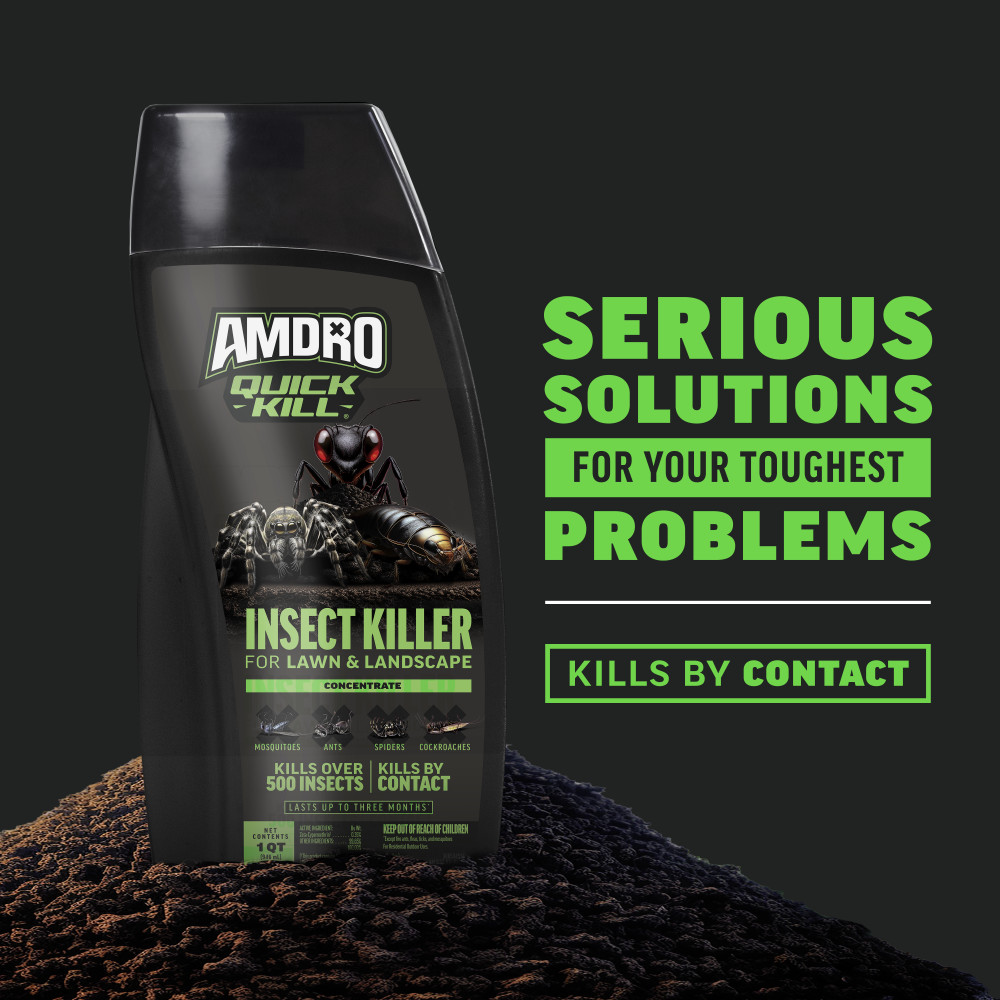
Amdro Quick Kill® Insect Killer for Lawn & Landscape Concentrate
Size:
When insects have taken over your outdoor space, it’s time to reach for a solution that works. Amdro Quick Kill Insect Killer for Lawn & Landscape works in minutes* and kills over 500 insects. This fast-acting (except ticks) spray kills by contact and won’t harm your lawn when used as directed. Amdro Quick Kill Insect Killer for Lawn & Landscape come in both Ready to Spray and Concentrate formulas. With the ready to spray there is no mixing and no measuring required. Just shake well, insert hose and spray. With the liquid concentrate use the easy-measure cap and dilute with water for spray application. Simply mix with water according to label directions and get up to 32 gallons of spray for up to 32,000 square feet of coverage. These products kill by contact and keep killing for up to 3 months.** People & pets may reenter treated area after spray has dried. Since 1980, Amdro has been providing pest control products for ants, spiders, cockroaches, mosquitoes, chinch bugs and many more. With our tested formulas, you can feel confident your pest problem is handled and get back to your life.
- PROTECT YOUR YARD FROM LISTED PESTS with Amdro Quick Kill Insect Killer for Lawn & Landscape. This product provides up to 3 months of insect control.**
- ECONOMICAL, JUST ADD WATER according to label directions to make insect spray. 1 quart of concentrate makes up to 32 gallons of spray and treats up to 32,000 sq. ft.
- TARGETS AND KILLS OVER 500 INSECTS including mosquitoes, ants, spiders, cockroaches, fleas, Japanese beetles, stink bugs, chinch bugs and more.
- KILLS BY CONTACT and won’t harm your lawn, flowers, trees, and shrubs when used as directed.
- PROVIDES SAME DAY CONTROL. Starts working in minutes (except ticks). People and pets may re-enter treated area after spray dries.
- A TRUSTED PARTNER IN PEST CONTROL SINCE 1980. Count on Amdro for highly effective solutions to your pest control needs.
Ants, Mosquitoes, Fleas, Silverfish, Spiders, Cockroaches, Aphids, and other listed lawn and garden pests
View All Targeted Pests
FAQ
How long do I need to wait before letting my children and pets back in the treated area?
Children and pets can re-enter the treated area after the product has dried.
Will this product harm any flowers, plants or trees?
No, when used as directed, this product will not harm lawns, blooms or trees.
Is there a temperature limit as to when I shouldn’t apply the product?
No, there isn’t a temperature limit for this product. However, if you're in an area that is experiencing high heat of above 90 degrees, we recommend applying early morning or in the evening, to avoid the heat of day.
How many gallons does the 32 ounce bottle make?
Amdro Quick Kill Insect Killer for Lawn & Landscape Concentrate uses 4 ounces per gallon and makes a total of 8 gallons per 32oz bottle.
Should this product be applied before or after rain?
We recommend using this product when rain isn't expected in 24 hours to avoid run-off. If it's going to rain, we recommend using it after rain.
VIEW ALL TARGETED PESTS
Caterpillars, Butterflies and Moths - Tent forming caterpillars, cocoon forming caterpillars, chrysalis forming caterpillars. Leaf feeding caterpillars (including leaves of flowering plants, bushes and other ornamentals, vegetables and trees), azalea leafminers, green cloverworm, fruit eating caterpillars, legume feeding caterpillars, vegetable feeding caterpillars, stem and trunk boring caterpillars, and leafrolling caterpillars. Caterpillars of the Yucca Moth family such as Fairy moths and Yucca moths; Clothes moth family; bagworm moth family, Gelechiid moth family such as Potato tuber moths; Ermine Moth family such as Ailanthus Webworm moth; Clear Winged moth family such as Manroot borer, Squash Vine borer, Doll’s Clearwing moth, California Sycamore borer; Tortricid Moth family (millers) such as Fruit Tree Leafroller moth, Orange Tortrix, and Codling moth; Skippers such as Least Skipper, Silver-spotted Skipper, and Long-tail Skipper; Swallowtails such as Green swallowtail, Zebra Swallowtail, Giant Swallowtail (Orange Tail, Orange Puppy), Pale Swallowtail, Eastern Tiger Swallowtail, Eastern Black Swallowtail, Spicebush Swallowtail, and Phoebus; Whites, Sulphurs and Orange Tips family such as Sara Orange Tip, Great Southern White, and European Cabbage Butterfly; Gossamer-Winged Butterflies Family such as Great Purple Hairstreak, Spring Azure, Early Hairstreak, Eastern Tailed blue, Harvester, Silvery Blue, Brown Elfin, Marine Blue, American Copper, and Gray Hairstreak; Metalmark family such as Northern Metalmark; Snout Butterflies family such as Common Snout Butterfly; Brush-Footed Butterfly family such as Gulf Fritillary, White Peacock, Harris’ Checkerspot, Painted Lady (Thistle butterfly), American Painted Lady (Painted Beauty), Baltimore, Zebra (Yellow-barred Heliconian), Viceroy, White Admiral (Banded Purple), Mourning Cloak, Milbert’s Tortoise Shell, Pearl Crescent, Question Mark, Buckeye, Great Spangled Fritillary, and Red Admiral; Hackberry and Goatweed Butterfly family such as Hackberry butterfly; Satyrs, Nymphs and Arctics family such as Wood Nymph (American Grayling), White Wood Satyr, Eyed Brown (Grass Nymph), Pearly Eye, and Chryxus Arctic; Milkweed Butterfly family such as Queen, and Monarch; Smoky Moth family such as Grape Leaf Skeletonizer; Slug Caterpillar Moth family such as Saddleback Caterpillar Moth; Pyralid Moths family such as Mediterranean Flour Moth Sod Webworm Moth, Indian Meal Moth, Meal Moth; Plume Moth family such as Artichoke Plume Moth; Measuringworm Moth family such as Tulip Tree Beauty, California Cankerworm Moth, and Large California Spanworm Moth; Tent Caterpillar Moth family such as Western Tent Caterpillar Moth; Giant Silkworm Moth family such as Luna Moth, Polyphemus moth, Io Moth, Promethea Moth (Spicebush Silkmoth), Regal Moth (Royal Walnut Moth), Rosy Maple Moth, Imperial Moth, Sheep Moth, Cecropia Moth, and Cynthia Moth; Sphinx moth family such as Virginia-creeper Sphinx, Pandora Sphinx, Hummingbird Moth (Common Clearwing), White-lined Sphinx, Tomato Hornworm Moth, Tobacco Hornworm Moth, Big Poplar Sphinx, Cerisy’s Sphinx, and Wild-cherry Sphinx; Prominents family such as Tentacled Prominenets (Puss Moths), and Redhumped Appleworm Moth; Tiger Moth family such as Ornate Tiger Moth, Yellow Woolly Bear Moth, Acraea Moth, Milkweed Tiger Moth, Spotted Tiger Moth, Colona, Woolly Bear Caterpillar Moth (Banded Woolly Bear), Lichen Moth, and Rattlebox Moth; Ctenuchid Moth family such as Virginia Ctenuchid moth; Tussok moth family such as Gypsy Moth, White-marked Tussok Moth; Owlet Moth family such as Eight-spotted Forester, Black Witch, Alfalfa Looper, Sweetheart Underwing, Locust Underwing, and Hebrew
Common Bristletails - Silverfish Family such as Silverfish, and Firebrat
Springtails - Podurid Springtail family such as Snow Pea, Seashore Springtail; Entomobryid Springtail family such as Ainsley’s Springtail; Globular Springtail family
Cockroaches - Blattid Cockroach Family such as Oriental Cockroach (Asiatic Cockroach, Shad Cockroach), and American Cockroach (Waterbug); Blattellid Cockroaches family such as German Cockroach (Croton Bug)
Termites - Rotting-wood termite family such as Pacific Coast Termite; Subterranean termite family such as subterranean termites.
Earwigs - Long-Horned Earwig family such as Ring-legged Earwig, and Riparian Earwig; Common Earwig family such as European Earwig
Grasshoppers & Crickets - Pygmy Grasshopper family such as Aztec Pygmy Grasshopper; Short-Horned Grasshopper family such as Creosote Bush Grasshopper, Lubber Grasshopper , Painted Grasshopper, Carolina Locust, Dragon Lubber Grasshopper (Gray Dragon), Three-banded Grasshopper (Banded Range Grasshopper), Differential Grasshopper, Red-legged Locust, Spur-throated Grasshopper, Two-stripped Grasshopper, Panther-spotted grasshopper, Southeastern Lubber Grasshopper, Alutacea Bird Grasshopper, American Bird Grasshopper, Green Valley Grasshopper, Toothpick Grasshopper, Horse Lubber Grasshopper, Pallid-winged Grasshopper, and Great Crested Grasshopper (Dinosaur Grasshopper); Longhorned grasshoppers and Katydids family such as Oblong-winged Katydid, Mormon Cricket, Short-legged Shield back Katydid, California Katydid, Angularwinged Katydid, Keeled Shield-back Katydid, Nebraska Cone-head, Gladiator Katydid, Mescalero Shield-back Katydid, True Katydid (Northern Katydid), and Fork-tailed Bush Katydid; Camel Crickets family such as Spotted Camel Cricket, Secret Cove Cricket, Jerusalem Cricket; True Crickets family such as House Cricket (Cricket on the Hearth), Field Cricket, California Tree Cricket, Snowy Tree Cricket, and Black-horned Tree Cricket; Mole Cricket family such AS Northern Mole Cricket and European Mole Cricket
True Bugs - Plant Bug family such as Adelphocoris Plant Bugs, Scarlet Plant bugs, Tarnished Plant Bugs, and Four-lined Plant Bug; Assassin bug family such as Bee Assassins, Wheel Bug; Ambush Bug family such as Jagged Ambush Bug; Lace Bug family such as Oak Lace Bug; Seed Bug family such as Small Eastern Milkweed Bug; Long-necked Seed Bug, and Large Milkweed Bug; Stilt Bug family such as Stilt Bugs; Leaf-footed Bug family such as Florida Leaf-footed Bug, and Squash Bug; Scentless Plant Bug family such as Eastern Boxelder Bug and Western Boxelder Bug; Stink Bug family such as Green Stink Bug, Brochymenas, Two-spotted Stink Bug (Conspicuous Stink Bug), Harlequin Cabbage Bug ( Calico Bug, Fire Bug), and Spined Soldier Bug
Cicadas and Kin - Cicada family such as Periodical Cicadas, Dogday Harvestfly, and Grand Western Cicada
Treehoppers - Treehopper family, such as Thorn-mimic Treehopper, Oak Treehopper, Buffalo Treehopper, and Locust Treehopper
Leafhoppers - Leafhopper family such as Grape Leafhopper, Scarlet-and-green Leafhopper, Sharpshooter
Thrips - Banded Thrips family such as Banded-wing Thrips; Common Thrips family
Beetles - Tiger Beetle Family such as Beautiful Tiger Beetle, Dainty Tiger Beetle, SixSpotted Green Tiger Beetle, and Dejean’s Flightless Tiger Beetle; Ground Beetle family such as Bombardier Beetle, Fiery Searcher (Caterpillar hunter), European Ground Beetle, Green Pubescent Ground Beetle, Common Black Ground Beetle, and Boat-backed Ground Beetle; Predacious Diving Beetle family such as Small Flat Diving Beetle, Large Diving Beetle, and Marbled Diving Beetle; Whirligig Beetle family such as Large Whirligig Beetle, and Small Whirligig Beetle; Hister Beetle family such as Hister beetles; Rove Beetle family such as Gold-and-brown Rove Beetleand Pictured Rove Beetle; Carrion Beetle family such as Margined Burying Beetle, Tomentose Burying Beetle (Gold-necked Carrion Beetle), American Carrion Beetle, and Northern Carrion Beetle; Stag Beetle family such as Elephant Stag Beetle, Agassiz’s Flat-horned Stag Beetle, Reddish-brown Stag Beetle, and Rugose Stag Beetle; Bessbugs family such as Patent-leather Beetle (Horned Passalus); Scarab Beetle family such as Tumblebugs, Goldsmith Beetle, Green Jumping Beetle, Brown Fruit Chafer, Glossy Pillbug, Grapevine Beetle, May Beetles (June Beetles), Ten-lined June Beetles, and Japanese Beetle; Metallic Wood-Boring Beetles such as Golden Buprestid, Western Pine Borer (Sculptured Pine Borer), and Divergent Metallic Wood Borer (Flatheaded Cherry Tree Borer); Click Beetle family such as Eastern Eyed Click Beetle (Big-eyed Click Beetle), and Fire Beetles; Fireflies (Lightning Bugs) family such as Pyralis Firefly, and Pennsylvania Firefly; Soldier Beetle family such as Pennsylvania Leather-wing, and Downy Leather-wing, Net-winged Beetle family such as Banded Net-wing, and Golden Net-wing; Spider Beetle family such as Spider Beetles, and Texan Spider Beetle; Branch and Twig Borer family such as Apple Twig Borer; Checkered Beetle family such as California Checkered Beetle, Elegant Checkered Beetle, Slender Checkered Beetle, and Red-blue Checkered Beetle; Flat Bark Beetle family such as Red Flat Bark Beetle; Pleasing Fungus Beetle such as Rough Fungus Beetle; Ladybug Beetles such as Two-spotted Ladybug Beetle, Nine-spotted Ladybug Beetle, Spotless “Nine-spotted” Ladybug, Convergent Ladybug Beetle, and Ash Gray Ladybug Beetle; Darkling Beetles such as Horned Fungus Beetle, Broad-necked Darkling Beetle, Plicate Beetle, Yellow Mealworm Beetle, and Ironclad Beetle; Fire-colored Beetles family such as Fire Beetles; Blister Beetles family such as Striped Blister Beetle, Arizona Blister Beetle, Short-winged Blister Beetle, (Oil Beetle); Long-horned Beetle family such as Black-horned Pine Borer, Yellow Douglass Fir Borer, Long-jawed Longhorn, Elder Borer (Cloaked Knotty-horn), Twig Pruners, Pine Sawyer (Spined-neck Longhorn), Golden-haired Flower Longhorn, Locust Borer, Black Pine Sawyer (White Spotted Sawyer), Cylindrical Hardwood Borer, Cottonwood Twig Borer, Cottonwood Borer, Giant Root Borers, Ribbed Pine Borer, California Laurel Borer (Banded Alder Borer), Ivory0marked Beetle, Red Milkweed Beetle (Eastern Milkweed Longhorn), Notch-tipped Flower Longhorn, and Willow Borer; Seed Borer family such as Bean Weevil; Leaf Beetle family such as Dogwood Calligrapha, Milkweed Tortoise Beetle (Argus Tortoise Beetle), Dogbane Leaf Beetle, Milkweed Leaf Beetle, Willow Leaf Beetle, Spotted Asparagus Beetle, Clavate Tortoise Beetle, Spotted Cucumber Beetle, Waterlily Leaf Beetle, Swamp Milkweed Leaf Beetle, Three-lined Potato Beetle, (Old-fashioned Potato Bug, Colorado Potato Beetle, and Girdled Leaf Beetle; Primitive Weevil family such as Oak Timberworm Beetle (Primitive Weevil); Snout Beetles and Weevil family such as Boll Weevil, Black Oak Acorn Weevil, Lesser Cloverleaf Weevil, Alfalfa Weevil, F6570 EW MASTER INSECTICIDE 8/1/2016 Page 42 Pine Weevils, Rose Weevils, Agrave Billbug, and Stored-grain Billbug (Granary Weevil, Elephant Bug); Bark and Ambrosia Beetle family such as Red Turpentine Beetle, Pine and Spruce Engraver Beetles, and Bark Beetles.
Bees, Ants, Wasps & Sawflies - Cimbicid Sawflies family such as Rusty Willow Sawfly; Common Sawfly family such as Northeastern sawfly; Horntail family such as Pigeon Horntail, and Smokey Horntails; Stem Sawflies family such as Raspberry Horntail; Braconids family such as Braconid Wasps; Ichneumons family such as Giant Ichneumons, Short-tailed Ichneumons and Red-tailed Ichneumon; Torymid Wasp family such as California Torymus; Chalcid family such as Golden-yellow Chalcid; Gall Wasp family such as California Oak Gall Wasps and Live Oak Gall Wasp; Pelecinid family such as American Pelicini; Tiphiid Wasp family such as Five-banded Tiphiid Wasp; Velvet-Ants such as Thistledown Velvet-ant, Red Velvet-ant, and Cow Killer; Scoliid Wasp family such as Scarab-hunter Wasp, and Digger Wasp; Ant family such as Spine-waisted ants, Leafcutter ants, Texas Carpenter ants, Black Carpenter ants, Crater-nest ants, Crazy Ants, Tawny Crazy Ants, Texas Shed-builder ant (Acrobat Ant), Red Ant, Legionary Ant, Little Black Ant, Arid Lands Honey Ant, Big-headed Ant, Honey Ant, and Fire Ant; Vespid Wasp family such as Potter Wasp, Paper Wasps, Yellow Jackets, and Sandhills Hornet; Spider Wasps such as Blue-black Spider Wasps, and Tarantula Hawk; Sphecid Wasp family such as Thread-waisted Wasps, Eastern Sand Wasp, Steel-blue Cricket Hunter, Purplish-blue Cricket Hunter, Florida Hunting Wasp, Black and Yellow Mud Dauber, Cicada Killer, and Great Golden Digger Wasp; Bee families such as Plasterer Bee, Yellow-faced Bees, Virescent Green Metallic Bees, Augochlora Green Metallic Bees, Alkali Bee, Mining Bee, Willow Mining Bee, Nevada Mining Bee, Clarkia Bee, Faithful Leafcutting Bee, Western Leafcutting Bee, Mason Bees, California Leafcutting Bee, Digger Bees, Western Cuckoo Bee, California Carpenter Bee
Flies - Crane fly family such as Wood-boring Tupulid, Giant Western Crane Fly, and Crane Flies; Phantom Crane Flies such as Phantom Crane Fly; Net-winged Midges such as Comstock’s Net-winged Midge; Phantom Midges; Black Flies such as Black flies; March Flies family such as March Flies; Fungus Gnats family such as Fungus Gnats; Snipe Fly family such as Gold-backed Snipe Fly; Stiletto Fly family such as Stiletto Flies; Flower-loving Fly family such as Flower-loving Fly; Mydas Fly family such as Mydas fly; Robber Fly family such as Bearded Robber Fly, Sacken’s Bee Hunter, Giant Robber Fly, Bee Killer (Giant Robber Fly), and Robber Flies; Bee Flies such as Bee Fly, Large Bee Flies, and Progressive bee Flies; Dance Flies such As Dance Flies; Long-Legged Flies such as Condylostylid Long-legged Flies, and Texan Long-legged Fly; Hover Fly family such as Woollty Bear Hover Flies, Elongate Aphid Flies, Drone Flies, Bulb Flies, American Hover Flies, and Toxomerus Hover Fly; Thick Headed Fly family such as Thick headed fly; Pyrgotid Fly family such as Pyrgotid Flies; Fruit Fly family such as Walnut Husk Fly, and Apple Maggot Fly; Seaweed Fly family such as California Seaweed Fly; Marsh Fly family such as Marsh flies; Shore fly family such as Yellowstone Brine Fly; Pomace fly family such as Vinegar Fly; Anthomyiid Fly family such as Dung Fly; Muscid Fly family such as House Fly, and Biting Stable Fly; Louse Fly family, Blow Fly family such as Blue Bottle Fly, Screw-worm Fly, and Green Bottle Fly; Flesh Fly family such as Flesh flies; Tachinid Fly family such as Beelike Tachinid Fly, Early Tachinid Fly, Repetitive Tachinid Fly, Tachina Fly, and Fringe-legged Tachinid Fly
Spiders - Folding trapdoor spider family such as Turret spider; Tarantula family such as Desert Tarantula; Trapdoor Spider family such as California Trapdoor spider; Dictynid spider family such as Branch-yip spiders; Spitting spider family such as Spitting spiders; Violin Spider family such as Desert Loxosceles, and Violin Spider; Comb-footed Spider family such as American House Spider, and Black Widow Spider; Sheet-web Weaver family such as Hammock Spider; Orb Weaver family such as Orb weavers, barn spider, Garden spider (cross spider), Marbled orb Weaver, Shamrock Spider, Six-spotted Orb-weaver, Silver Argiope, Blackand-Yelley Rgiope, Crablike Spiny Orb Weaver, Bola Spider, Arrow-shaped Micrathena, and Golden-silk spider (calico spider); Large-jawed Orb Weaver family such as Mabel Orchard Spider, Venusta Orchard Spider, Elongate Longjawed Orb Weaver, and Long-jawed Orb Weaver; Funnel Web Weaver family such as Grass Spiders; Nursery Web Spider family such as Brownish-grey Fishing Spider, Six-spotted Fishing spider, and Nursery Web Spider; Wolf Spider family such as Burrowing Wolf Spiders, Carolina Wolf spider, Forest Wolf spider, rabid wolf spider, and Thin-legged Wolf spider; Lynx Spider family such as Jumping Lynx spider, and green lynx spider; Sac Spider family such as Ant-mimic spiders; Wandering spider family such as Wandering spiders; Giant Crab spider family such as Huntsman spider, and Golden Huntsman spider; Selenopid Crab Spider family such as Selenopid Crab Spider; Crab Spider family such as Goldenrod spider (flower spider, red-spotted Crab Spider), Elegant Crab Spider, Thrice-banded Crab Spider; Philodromid family such as Inconspicuous Crab Spiders; Jumping Spiders such as Green Lyssomanes, Dimorphic Jumping Spider, Metaphid Jumping Spider, Ant-mimic Jumping spider, and Daring Jumping spider Daddy-long-legs family such as Eastern Daddy-long-legs and Brown Daddy-longlegs
Ticks - Blacklegged tick, Brown dog tick, Deer tick
Psyllid, Whiteflies, Aphids, Mealybugs, Scale Insects - Psyllid family such as American Alder Psyllid; Whitefly family such as Greenhouse Whitefly; Aphid family such as Green Apple Aphid, Rosy Apple Aphid, Rose, Pea and Potato Aphid, Root Aphid, Coudy-winged Cottonwood Aphid, and Giant Willow Aphid; Woolly and Gall-Making Aphid family such as Woolly Apple Aphid; Giant Scale Insects family such as Cottony Cushion Scale; Armored Scale Insects family such as Oyster Shell Scale; Mealybug family such as Long-tailed mealybug; Cochineal Bug family such as Cochineal bug.
Millipedes - Millipedes such as soft millipedes, Florida millipede, Almond millipede, North American millipede and flat millipedes

